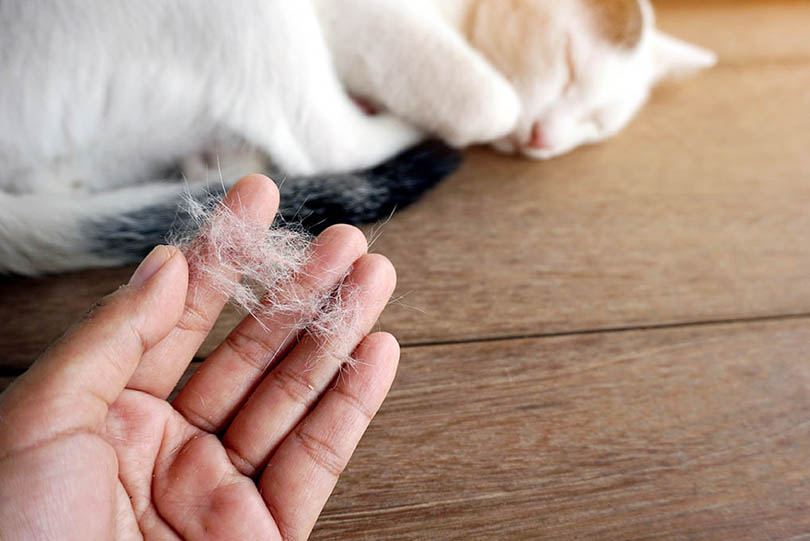What Is a Normal Cat Blood Pressure Reading? Our Vet Explains

Updated on
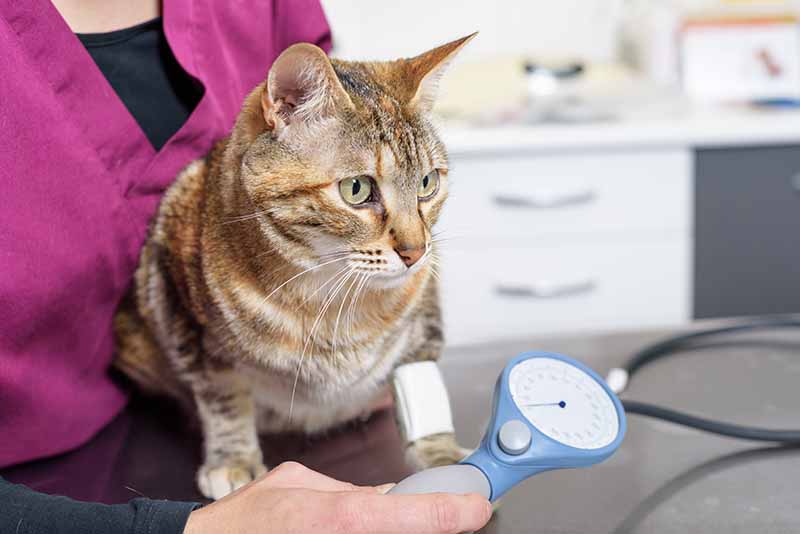
Most of us will, at some point, have had our blood pressure measured with a sphygmomanometer—with the cuff around the top of your arm that is inflated by squeezing a rubber pump or with an electronic device. If you’re like me, you feel a strange sense of pride when told that you have “excellent blood pressure,” but how many of us really know what that is? In humans, normal blood pressure is around 120/80mmHg, and a cat’s should be around 120–140/80mmHg . But what does this actually mean?
In the following article, we will break down what these figures mean, how blood pressure is measured, and how that is adapted to cats.
What Do Blood Pressure Readings Tell Us?
- Systolic pressure (SP): blood pressure in the arteries when the heart contracts (beats). This is the highest value in a blood pressure reading.
- Diastolic pressure (DP): blood pressure in the arteries when the heart relaxes. This is the lowest value in a blood pressure reading.
-
Mean Arterial Pressure (MAP): the average pressure in the arteries over the systolic and diastolic cycle. As the diastolic period is generally longer than the systolic, the MAP is closer to the diastolic value. It is calculated using the following formula:
- MAP = DP + ⅓(SP – DP)
- mmHg: millimeters of Mercury (chemical symbol Hg), a unit of pressure
- Hypertension: high blood pressure
- Hypotension: low blood pressure
When a blood pressure reading is taken, the cuff around your arm is inflated to the point where no blood can flow through. The role of the sphygmomanometer is to measure the blood flow through the artery as that pressure is released. The first pressure at which blood flow returns to the artery is the systolic pressure. As the cuff pressure is gradually released, the blood flow becomes less constricted and the first point where there is no measurable resistance to blood flow is the diastolic pressure.
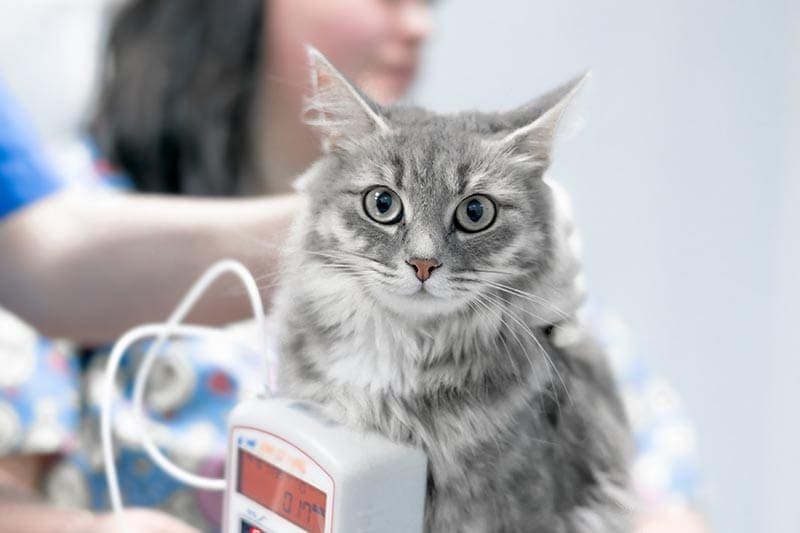
How Is Blood Pressure Measured in Cats?
You might be remembering your last trip to the doctor and wondering how on earth we measure a cat’s blood pressure. Surprisingly, the process is very much the same. In human medicine, the sound of blood flow returning, being constricted, and then becoming smooth is detected using either a stethoscope or a digital reader. When measuring blood pressure in cats, a doppler probe is placed against a shaved patch of skin to pick up these sounds, as they would be too difficult to hear using a stethoscope.
The two common places that readings are taken are the foreleg and the tail base. These are both long, straight appendages that the cuff can be applied to and a doppler probe placed without needing to restrain the cat too much.
There will be some cats that simply will not tolerate this sort of process, but there are ways to help cats feel more settled in order to measure their blood pressure, and you might be surprised to find that the majority of cats will actually tolerate this process quite well!
- Using pheromone analogs to help them feel calmer
- Creating a quiet, darkened space for them away from the hustle and bustle of a veterinary practice
- Admitting them to the hospital to spend a few hours in a quiet bed and take readings throughout the day, so as to not stress them too much, and get a range of readings rather than relying on readings taken in one sitting
Sedation is usually not used for taking blood pressure readings, as most sedatives will cause blood pressure to drop, so the measurements will not be accurate. The behavior and demeanor of the feline patient should always be considered when interpreting blood pressure readings on cats.
What Are the Causes and Effects of High Blood Pressure in Cats and How Is It Treated?
High blood pressure is, by far, the most common form of blood pressure abnormality seen in cats, owing to the fact that some of the most common health problems in cats result in hypertension. A consistent systolic reading of more than 160–180mmHg is indicative of hypertension in cats, although older cats can have higher readings as their “normal.” The most common causes of hypertension in cats are:
- Kidney (renal) disease: Chronic kidney disease (CKD) is the most common disease affecting older cats, and most cats with CKD will also have hypertension. It has not yet been discovered if one causes the other, but we do know that renal disease can lead to an increase in blood pressure, and the increase in blood pressure can cause further damage to the kidneys.
- Hyperthyroidism: Put simply, an overactive thyroid gland causes everything to speed up; metabolism is faster, heart rate is faster, and blood pressure is higher.
- Hypertrophic cardiomyopathy: This is the most common type of heart disease in cats and is characterized by the thickening of the left ventricular wall. This reduces cardiac output and can lead to tachycardia (increased heart rate), arrhythmias, blood clots, and tissue damage. It is often associated with hyperthyroidism in cats, likely due to the increase in metabolic and heart rates.
- Pain: In all species, pain leads to tachycardia and hypertension, unless accompanied by shock or significant blood loss.
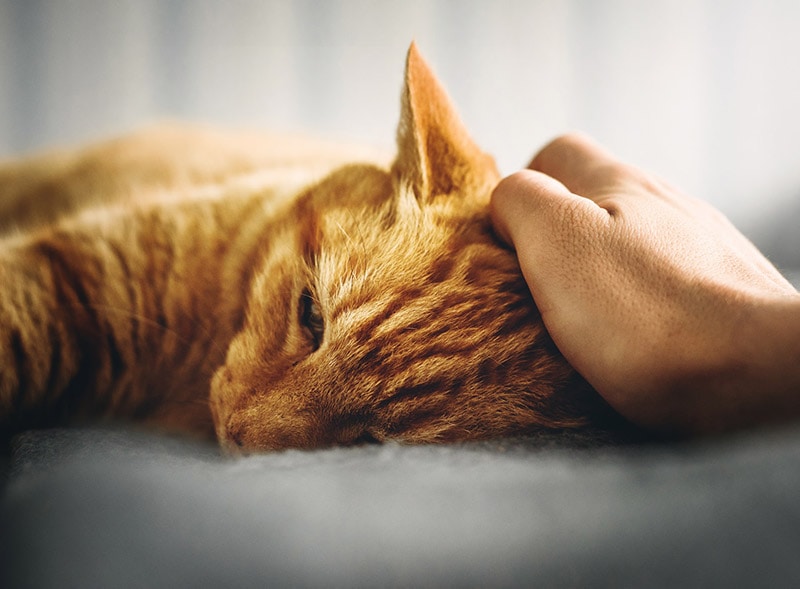
What Are the Common Clinical Signs of Hypertension in Cats?
Apart from the elevated blood pressure reading, signs that may indicate that your cat has high blood pressure will often depend on the cause or underlying disease.
- Sudden blindness
- Increased urination and drinking
- Weight loss
- Increased respiration rate or difficulty breathing
- Heart murmur, tachycardia, or arrhythmias
The common causes of hypertension in cats can usually be diagnosed in a veterinary practice with a combination of physical examination, blood tests, and urinalysis, in combination with blood pressure measurements.
How Is Hypertension Treated?
Feline hypertension is treated either directly by using medications to relax the blood vessels to lower blood pressure, or by treating the underlying condition.
- Hyperthyroidism can be managed or treated in a number of ways, including oral or topical medications to reduce thyroxine levels, surgery to remove the thyroid glands, or the administration of radioactive Iodine to destroy all thyroid tissue in the body.
- Cats with hypertension and CKD can be given calcium-channel blockers or ACE-Inhibitors to reduce blood pressure and improve renal function.
- In cases of hypertrophic cardiomyopathy, beta-blockers are used to reduce the speed and intensity of the heart contractions, which will also lead to a reduction in blood pressure.
It is important to monitor cats on treatment for hypertension with regular blood pressure checks and blood tests to ensure that the dose of medication is appropriate and that their blood pressure doesn’t become too low.
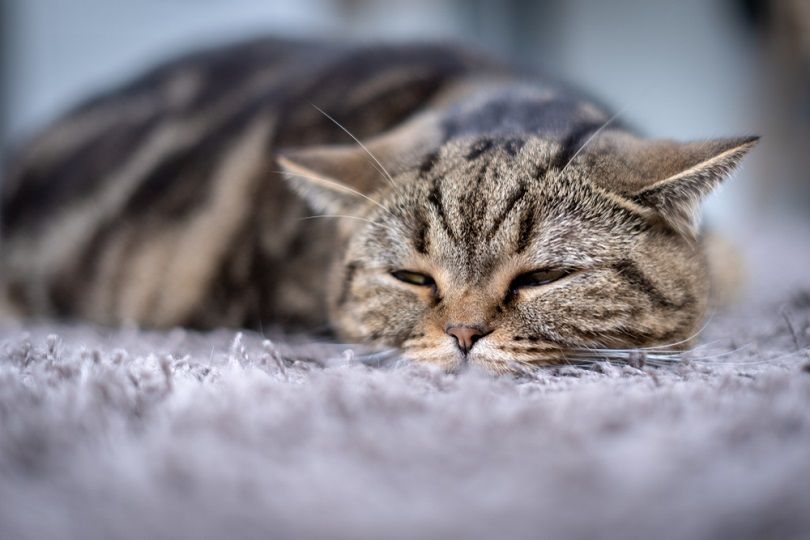
What Are the Causes and Effects of Low Blood Pressure in Cats, and How Is It Treated?
Low blood pressure in cats is fairly uncommon, partly due to the tendency for blood pressure to rise in a veterinary setting but also due to there being few conditions that will cause hypotension in this species. The main causes of hypotension in cats are:
- Shock
- Blood loss/hemorrhage
- Anesthesia
- Medications
Because hypotension is rarely a chronic condition in cats, it is usually corrected by addressing the inciting cause:
- Intravenous fluid therapy (shock)
- Stopping bleeding, closing wounds (hemorrhage)
- Reducing the depth of anesthesia and increasing intravenous fluid support (anesthesia)
- Dose reductions of drugs (medications for hypertension or hyperthyroidism)

Conclusion
Blood pressure measurement is frequently used in feline medicine as part of anesthetic monitoring, health checks, and the evaluation of response to treatment. It is non-invasive, rarely causes stress, and can be an early indicator of common feline diseases.
Low blood pressure in cats is most commonly a temporary response to trauma, medications, or anesthesia, and will generally resolve once these problems are corrected. High blood pressure is frequently found in older cats with chronic renal disease, hyperthyroidism, or hypertrophic cardiomyopathy. In most cases, the treatment of hypertension in cats will consist of treating the underlying cause, and in the case of renal disease, the treatment for one will also treat the other.
In most cases, hypertension is managed rather than cured, and in all cases, repeated monitoring is essential.
Featured Image Credit: David Herraez Calzada, Shutterstock




